Wondering if you can swim in Syndey Harbour on your Australian vacation? You’re not alone in the question. Folks have heard of Bondi Beach and more distant shores on the island continent nation, but Sydney Harbour sees even more tourists along its city shores.
Can you safely swim there? Is the water polluted? Let’s find out.
Is it Safe to Swim in Sydney Harbour?
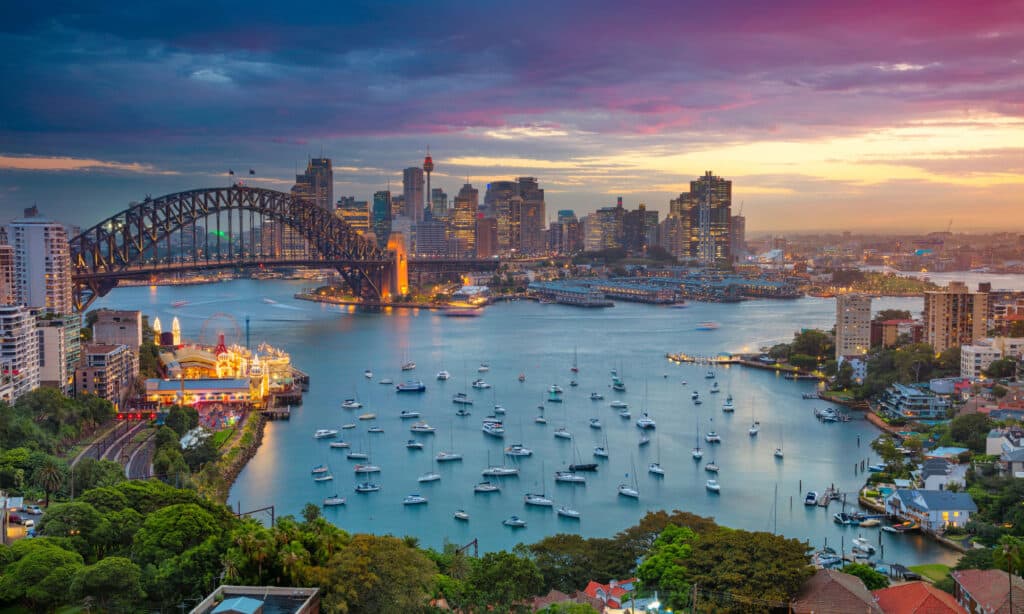
596 species of fish, plus many shellfish and other marine species have been recorded in Sydney Harbour. But is it safe for humans to go swimming here?
©iStock.com/RudyBalasko
In certain locations, Sydney Harbour is, in fact, a great place to swim. Specific beaches have been designated for safe swimming in the cool waters of the Pacific. You cannot just jump off a pier down in Circular Quay, though.
Several factors come into play when you think about swimming in Sydney Harbour. Weather conditions, boating traffic, wildlife alerts, water quality (or pollution), and more impact when and where you can dive in.
Is the Water Quality in Sydney Harbour Safe for Swimming?
Generally speaking, the water in Sydney Harbour is, indeed, safe for swimming, perhaps surprisingly so due to its close proximity to the second largest city in Australia.
There are some conditions, of course, specifically centering around weather conditions.
What Happens to Water Quality Following Heavy Rain?
While it might seem like “it’s just more water” falling into Sydney Harbour when it rains, pollution levels actually rise during these times. Stormwater overflows from backyards, streets, parks, and other areas and drains out into the harbour. That is, any rainwater unfiltered and flowing through the drainage system goes into the harbour.
Anything within the sewer system can pollute this water: animal excrement, leaves and litter, detergents, chemicals, oils, and other pollutants. This water then impacts swimming areas along the harbour for three days after the rainfall stops.
This pollution doesn’t always occur, but any time the sewage system experiences any backup, it can. Therefore, it’s best to assume rainy days and the three days following are no swim days in Sydney Harbour.
After rainfall, check the Beachwatch channels for details to ensure the harbour is cleared for swimming.
How Do You Know if it’s Safe to Swim in Sydney Harbour That Day?
Thankfully, the New South Wales government has created a branch to monitor the water at many beaches on Sydney Harbour. Their website provides the most recent data concerning safety, as well as forecasts based on weather patterns and known issues in the area.
Generally speaking, though, on dry weather days at least three days after the last rainfall, the harbour is safe for swimming unless specific problems have occurred.
Sydney Harbour Beaches
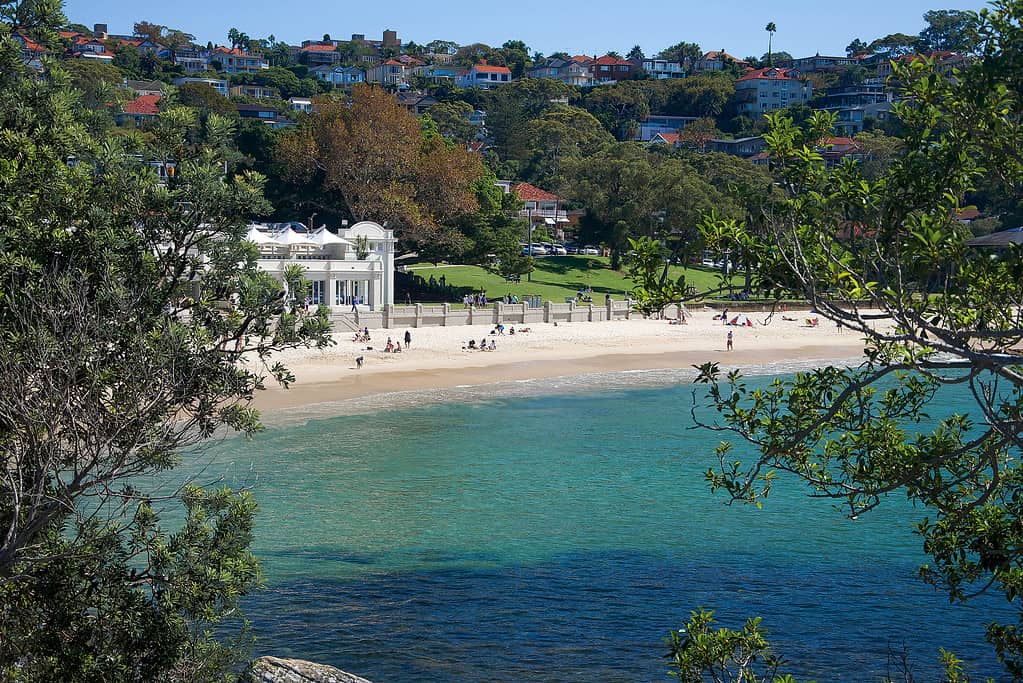
Balmoral Beach in Sydney, Australia, is safe for swimming along Sydney Harbour!
©Camila Se/Shutterstock.com
While Bondi Beach might be more famous, Sydney Harbour does have several beaches where swimming is safe.
- Balmoral Beach
- Watsons Bay
- Rose Bay
- Camp Cove
- Parsley Bay
- Milk Beach in Vaucluse
- Taylors Bay
- Shark Beach
- Red Leaf Beach
- Queens Beach
- Kutti Beach
- Lady Martin’s Beach
- Murray Rose Pool, Double Bay
- Seven Shillings Beach, Double Bay
- Chinamans Beach
- Store Beach
Which Local Beaches are Monitored for Water Quality?
Beachwatch, a part of the Department of Planning and Environment, monitors the following beaches for water quality.
- Shark Beach at Nielsen Park, Vaucluse
- Redleaf Bech at Double Bay
- Rose Bay Beach
- Parsley Beach
- Camp Cove
- Watsons Bay Beach
You can check their website for up-to-date information on water quality at these beaches.
Precautions and Warnings
Just like in any other body of water Sydney Harbour should raise some cautions and warnings for swimmers. Multiple potential dangers exist, from wildlife to algal blooms, or boating traffic.
Weather
Of course, any body of water is affected by the weather. Around the Sydney Harbour, strong winds coming from the north or east particularly require caution for swimmers. These winds can produce particularly cold winds, even in the warmest times of year. While this may seem like nothing important, the risk for hypothermia exists as the cold water drawn up from the ocean floor may affect humans swimming there. This is especially of concern for children.
Easterly winds are more likely to draw in bluebottles (or Portuguese Man o War). These jellyfish-like creatures aren’t likely to cause permanent harm unless you’re out too deep. But their stings sure do hurt and could cause you to drown if the pain is too intense and you’re too far from shore.
Dangerous Wildlife
Beyond bluebottles blown in by easterly winds, other dangerous creatures lurk within the Sydney Harbour.
Octopus
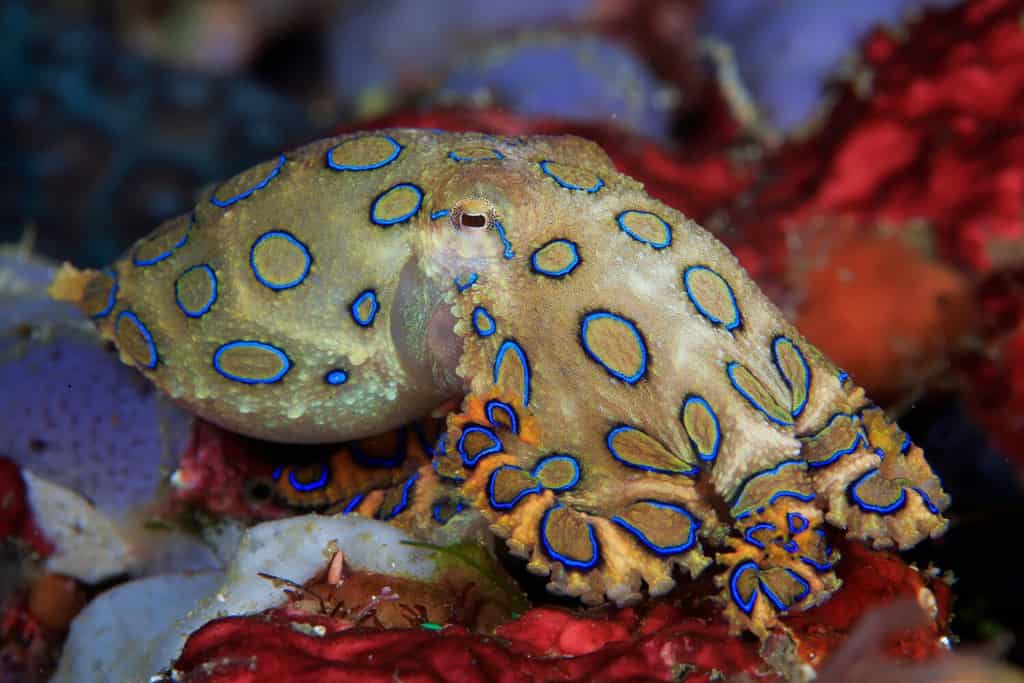
While this little octopus looks adorable and friendly, they’ve been deemed the deadliest animal in the oceans of the world. Never touch a blue-ringed octopus in Sydney Harbour!
©Thierry Eidenweil/Shutterstock.com
The Blue-ringed octopus seems harmless, with happy coloring and gentle-seeming nature. But these little critters have been deemed the most dangerous marine life in the world. Contact with these beauties can kill within a matter of minutes.
Sharks
Bull sharks, great white sharks, and tiger sharks call Sydney Harbour home. While attacks aren’t particularly common, they do occur. If you see that famous dorsal fin, move away quickly!
Jellyfish
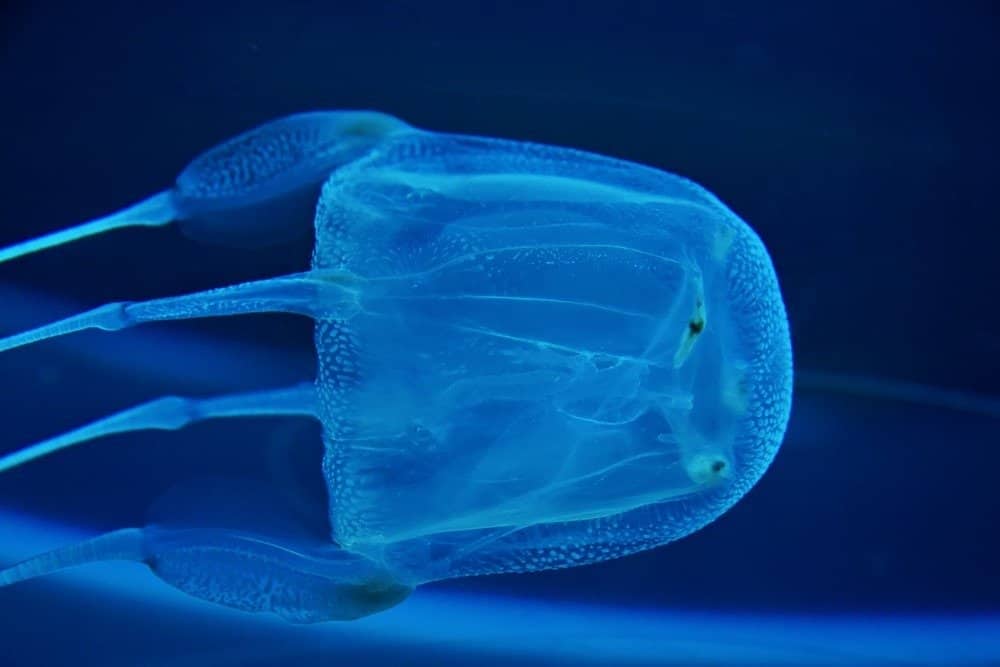
Box
jellyfish
are considered one of the deadliest creatures on earth. And, of course, they live in Sydney Harbour. Thankfully, most beaches have jellyfish nets to help keep swimmers safe, but that’s no guarantee.
©Daleen Loest/Shutterstock.com
If the blue-ringed octopus wasn’t enough, both the deadly box jellyfish (deadliest jellyfish in the world) and one of the other deadliest jellies, the Irukanji jellyfish call Sydney Harbour home. Beware of the tiny jellies as well as the large. Any could be dangerous.
Boating Traffic
In the main area, which most non-locals think about as Sydney Harbour, far too much boating traffic is present for safe swimming. Even around some beaches located elsewhere, too many boats pass too close to shore. Be sure to only swim in designated swimming areas to remain out of boating traffic lanes.
Dirty Water and Infections
When people hear the term “harbor” in conjunction with a major city, the first concern that arises is often pollution. Is the water safe to swim in? Will I get an infection? Will I get sick?
The Sydney Harbour uses an old wastewater and sewage system that gradually has seen upgrades. However, when storms hit, the system is easily overwhelmed and it takes time for the water quality to recover. Because of this, water in the harbour is frequently monitored.
It’s important to check for water quality warnings any time you consider hitting up the beach. Most of the time, the water’s just fine for swimming, especially east of the Sydney Harbour Bridge. But it’s best to check for any unique warnings that occur, particularly after storms.
Harmful Algal Blooms
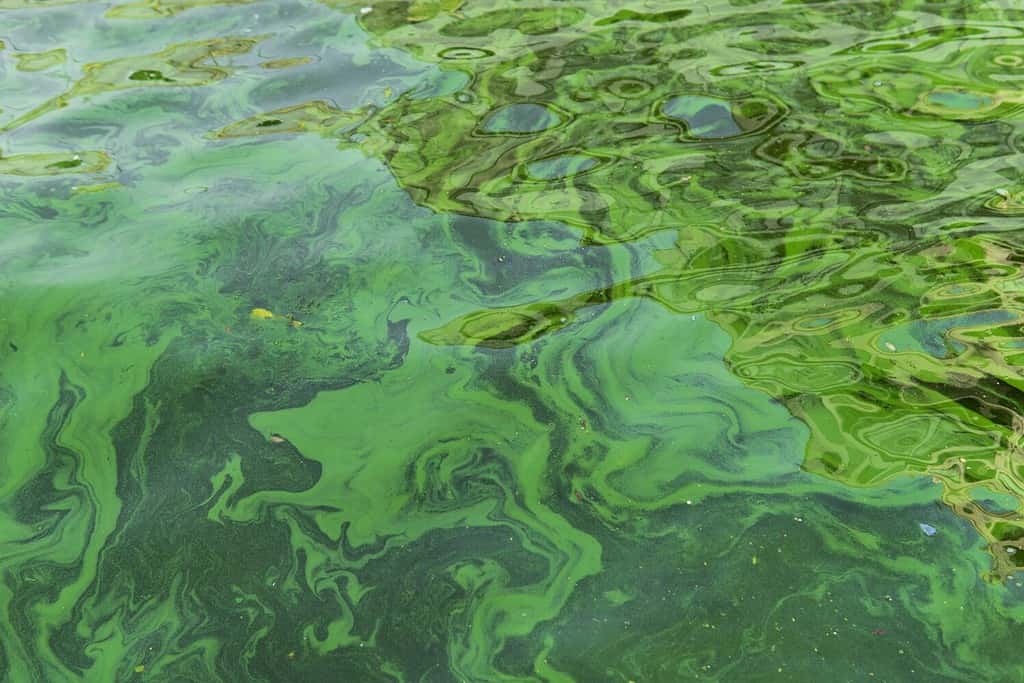
Algal bloom may occur in Sydney Harbour, particularly after a freak sandstorm over the water.
©Aleksandrkozak/Shutterstock.com
When conditions are right — or is that wrong? — dust storms may rise up over the harbour. When this occurs, the iron, nitrogen, and phosphorous in the dust deposit into the Sydney Harbour and feed algae. This results in algal blooms in red, green, or blue. These algal blooms are dangerous to humans, as they produce toxins.
When these blooms occur, it is not safe to swim in Sydney Harbour. Keep your pets away from the water as well, as the algae may cause irritations, difficulty breathing, hay fever, or other, worse conditions. Drinking the water with this algae in it could be even worse. Since you ingest water during swimming, you could wind up dashing to the bathroom and staying there for quite some time. For some, effects are even worse, resulting in liver or nervous system failure. Children and pets are particularly sensitive to harmful algal bloom, so be sure to keep them away.
The photo featured at the top of this post is © wasiolka/Shutterstock.com
Thank you for reading! Have some feedback for us? Contact the AZ Animals editorial team.







